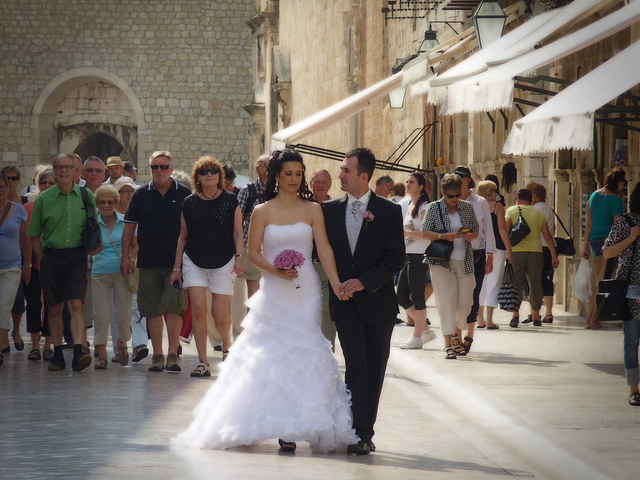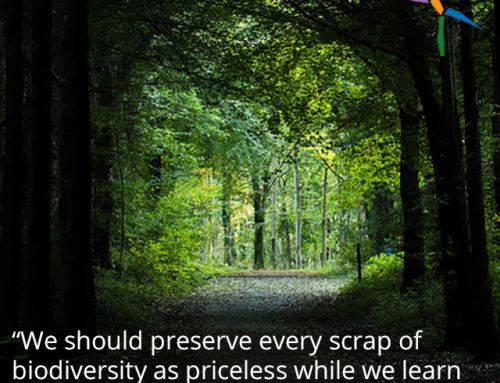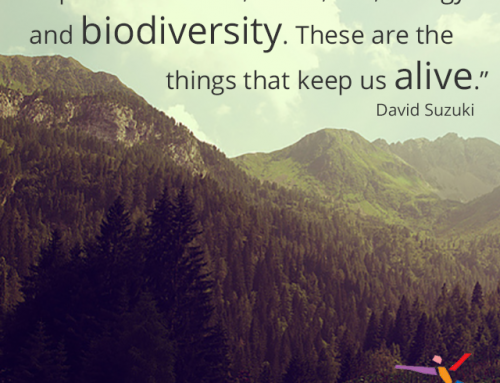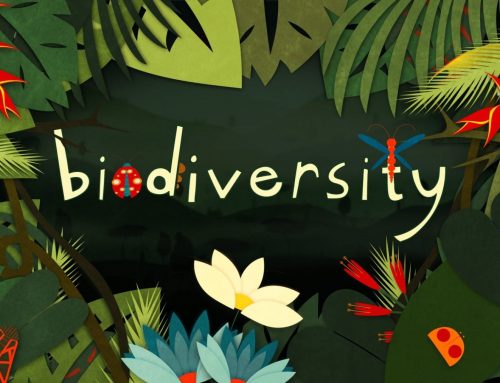Weddings. Many of us love them and would go to as many of them as possible, but the reality is that, in almost any culture, sizable weddings leave a massive carbon footprint behind. It’s not something that most of us think about when we’re starting to plan our fantasy princess (or prince) day. But any large scale event comes with its price to the environment. Today we’re going to look at all of the most typical ways that weddings leave a carbon footprint. We’re not doing this to take the fun out of your wedding, and we’re certainly not suggesting that you shouldn’t have a wedding. We just want you to take the time to think about where your future wedding is leaving a heavy boot print on the planet, be educated, and make your choices with the power of knowledge behind you.
The Food: It’s a Lot of Over Production and A Lot of Waste
One of the things that we all love the most about a good wedding is all of the food. Many of us go to a wedding specifically to overeat and (in many cases) over drink. Appetizers, multi-course meals, open bars, cake, dessert bars … it all adds up to a lot of food. In fact, it’s more food than people can possibly eat. And most caterers or wedding venues are going to be sure to produce an excess of food because they certainly don’t want the food to run out. There’s so much carbon footprint in this! To begin with, there’s obviously the carbon footprint associated with food production, shipping and packaging (not many of us can have local, organic wedding meals). Then there is naturally the energy associated with not only preparing the meal but also sanitizing and washing all of the dishes. Finally, there’s the food waste, which with most weddings is epic. In the first two cases, there is not very much you can do to minimize the carbon footprint associated. However, you can minimize the food waste – and not just be eating it! Make sure as much excess as possible is either donated or packed-up if your venue allows it.
Pro Tip: Our postconsumer bride reduced some food waste by making sure that leftover cake and desserts were put out again at the bon voyage brunch the next day.
The Travel: They Want to Be There. You Want Them There. It Adds Up.
Again, please don’t interpret what we’re saying as though we don’t think that you should travel to go to weddings or that you shouldn’t invite people who will have to travel to come to yours. We want everybody whom you care about to be able to share in your special day. But you do need to account for the carbon footprint of traveling in the overall eco-factor of your wedding. And it’s not just the carbon output of planes, trains or automobiles that you need to include. Presumably our out-of-town guests will also be staying in hotels, and hotel stays have their own eco-issues as well. Travel guests tend to eat takeout food and be less eco-conscious while traveling. In fact, travel is such an eco-imprint issue that we’ve dedicated an entire section of Postconsumers to it. Travel is a necessary part of most weddings in the modern era, but it also adds to the cost to the planet of your wedding.
The “Stuff”: There’s Just So Much of It
Once you start planning a wedding, you’ll realize very quickly how much “stuff” you’re supposed to be getting: rings, dresses, suits, gift bags, gifts for bridal party members, dresses for bridal party members, shoes for you, shoes for bridal party members, favors, gifts for people, photo albums, videos … the list is really as endless as is the budget of the couple. And if you want to personalize items in your wedding the list gets even bigger. Obviously there are ways that you can cut down on the carbon footprint overall by renting items or purchasing used items. But there’s almost no way to entirely avoid the crushing wave of “stuff you need” for a standard wedding. Of course, the good news is that much of this “stuff” is a personal choice. You want to host your guests graciously and make sure that you and your wedding party are appropriately attired, but you’re lucky that there is an entire scale of ways to make this happen. You just need to find your comfort spot between being environmentally and socially conscious and comfortable with how you look and how your guests are hosted.
The Gifts: Are They Things You Really Need?
Your wedding guests are going to give you gifts (or at least most of them are). But how you encourage them or don’t encourage them to do this can make a big difference in the overall consumer and eco-impact of your wedding. Gift registries, for example, tend to prompt people to give you a lot of “stuff” that you may or may not actually need (or even want). On the other hand, not having a gift registry can easily lead to people buying you “stuff” that you have absolutely no use for, making an argument that having a registry at least ensures that you’re getting stuff you may actually utilize. Today, there are plenty of alternatives to gift registries that can help you to encourage your guests to put cash towards a project, charity or trip that you’ve been dreaming of. There are some etiquette issues to consider when choosing that route, but you can embrace gifts without encouraging unnecessary “stuff.’ Again, the choice is a personal one for you to make.
Of course, there are many other elements of a wedding that can incrementally add to its carbon footprint. From day-of limos to showers and bachelor or bachelorette parties, the small pieces can certainly add up. What we would suggest as a good exercise that will ultimately help you with your planning effort, as well, is to make a list of every element of your wedding, think about how it impacts the planet and then consider whether or not you need it or if there is a more eco-friendly way to do it.
Did we miss a way that the carbon footprint of a wedding adds up that you want to share with us? If so, just tell us about it on one of the social media channels below.
Facebook | Twitter | Instagram | Tumblr | Pinterest | Google+





